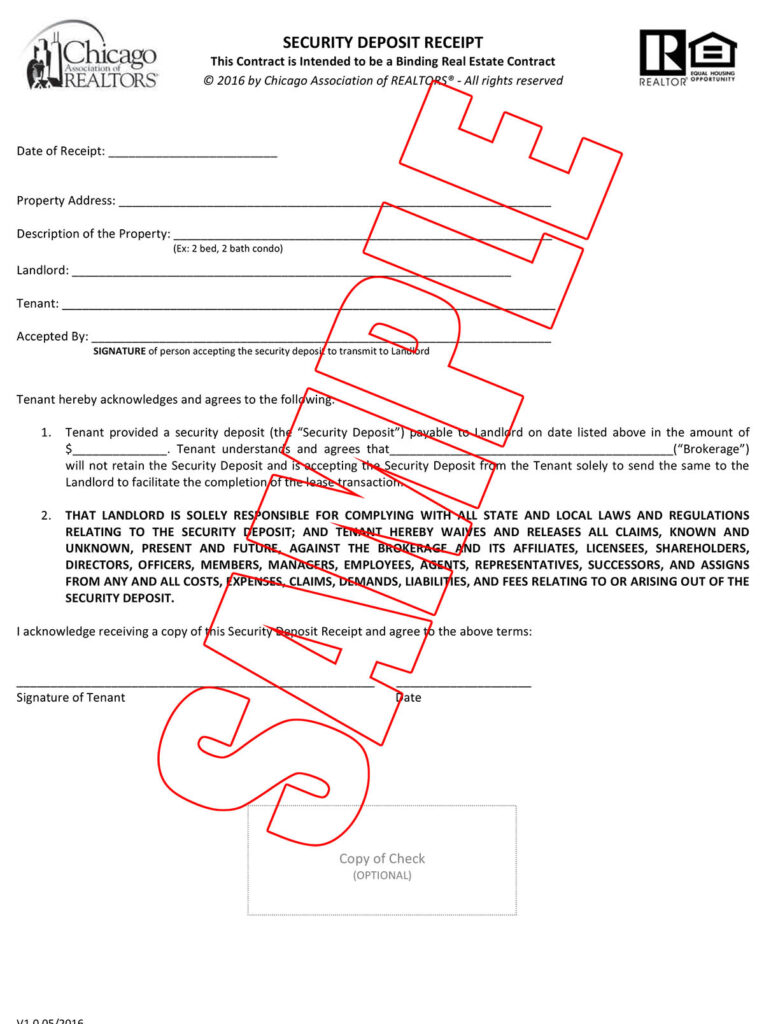 New Receipt Form issued by CAR for Deposits
New Receipt Form issued by CAR for Deposits
As readers of my blog should be well aware, I do not advocate the use of security deposits in those rentals governed by the Chicago Residential Landlord Tenant Ordinance. While many landlords and landlord advocates agree with me, there are still some landlords who insist on taking a deposit. The Chicago Association of Realtors (CAR) has just released a new form that hopes to ease the burden on landlords providing a security deposit receipt.
Seasoned landlords know all about the provisions of the CRLTO when it comes to security deposits. Here’s a refresher from part of the law dealing with security deposit receipts at 5-12-080(b)(1)
(b)(1) Except as provider for in subsection (b)(2), any landlord who receives a security deposit from a tenant or prospective tenant shall give said tenant or prospective tenant at the time of receiving such security deposit a receipt indicating the amount of such security deposit, the name of the person receiving it and, in the case of the agent, the name of the landlord for whom such security deposit is received, the date on which it is received, and a description of the dwelling unit. The receipt shall be signed by the person receiving the security deposit. Failure to comply with this subsection shall entitle the tenant to immediate return of security deposit.
So, the CRLTO sets out some obligations. As to timing, the receipt must be given at the time of receipt of the deposit. The receipt must indicate the amount of the deposit, the name of the person receiving the deposit, if the person receiving the deposit is an agent, the name of the landlord for whom the deposit is received, the date on which the deposit is received, a description of the dwelling unit, and the receipt should be signed by the person receiving the deposit.
The Chicago Association of Realtors form is below:
 One thing that caught my eye in the receipt is the use of both an address and a “Description of the Property”. Nowhere in the ordinance does it say that the description of the dwelling unit is the same thing as the property address. Many landlords and practitioners assume that this is the case, however, there’s no case law on this issue. Inasmuch as the folks at CAR are starting to make a distinction, I think it makes sense for landlords to adopt this new approach of including the property address as well as a description of the property. After all, if the landlord is going to go through all of the trouble to take a security deposit (and, again, I don’t advise my clients to take deposits!), then a cautions landlord might also want to include a description of the property just to be on the safe side.
One thing that caught my eye in the receipt is the use of both an address and a “Description of the Property”. Nowhere in the ordinance does it say that the description of the dwelling unit is the same thing as the property address. Many landlords and practitioners assume that this is the case, however, there’s no case law on this issue. Inasmuch as the folks at CAR are starting to make a distinction, I think it makes sense for landlords to adopt this new approach of including the property address as well as a description of the property. After all, if the landlord is going to go through all of the trouble to take a security deposit (and, again, I don’t advise my clients to take deposits!), then a cautions landlord might also want to include a description of the property just to be on the safe side.
